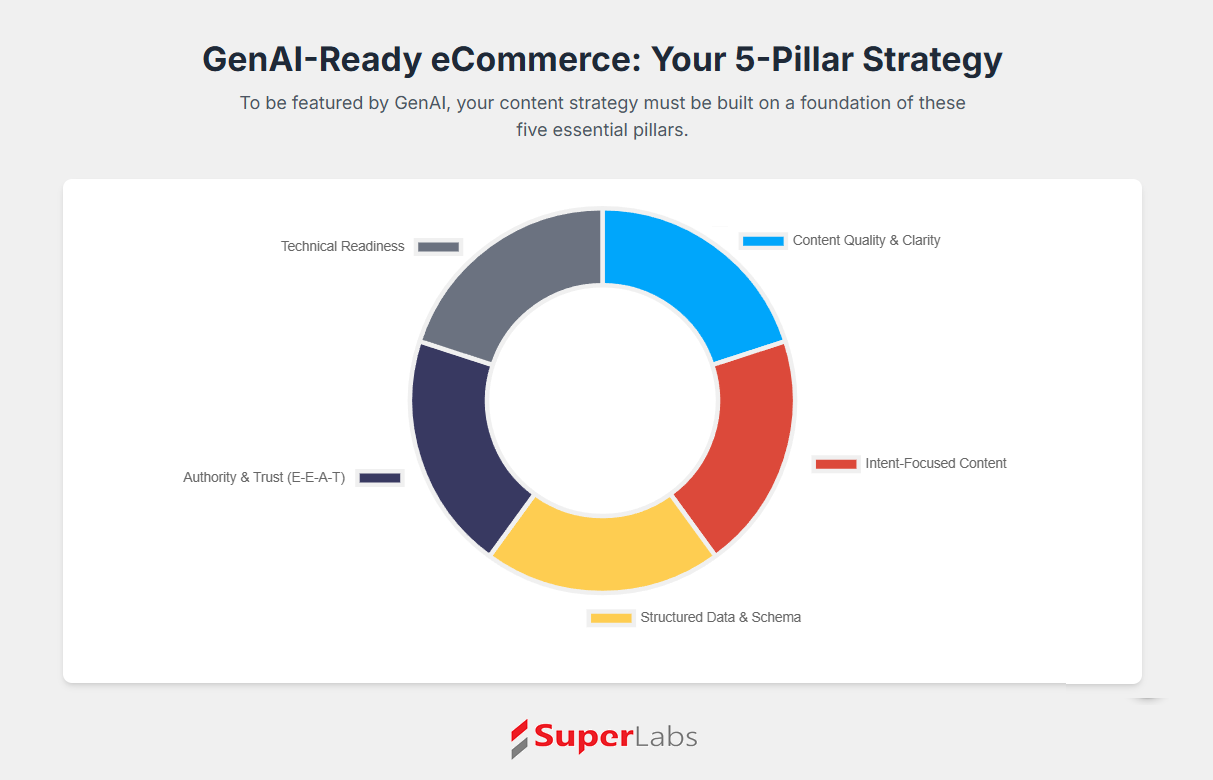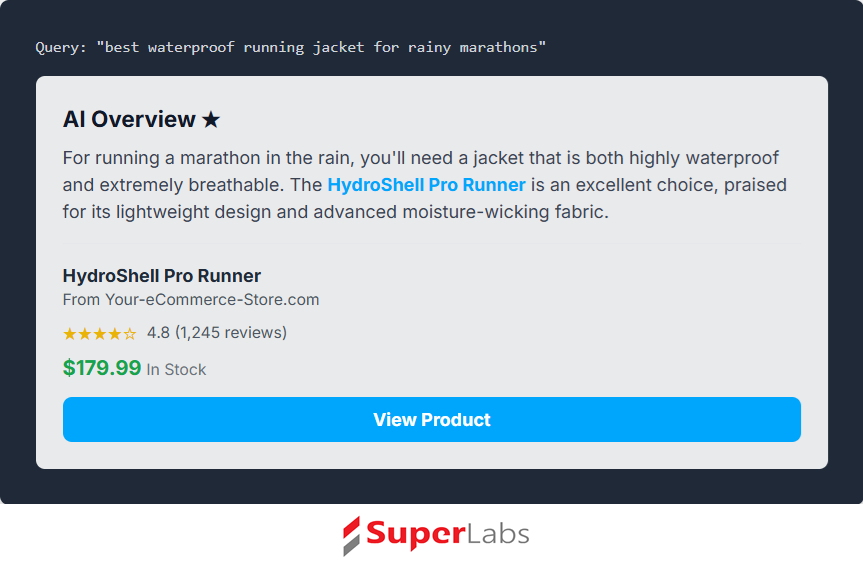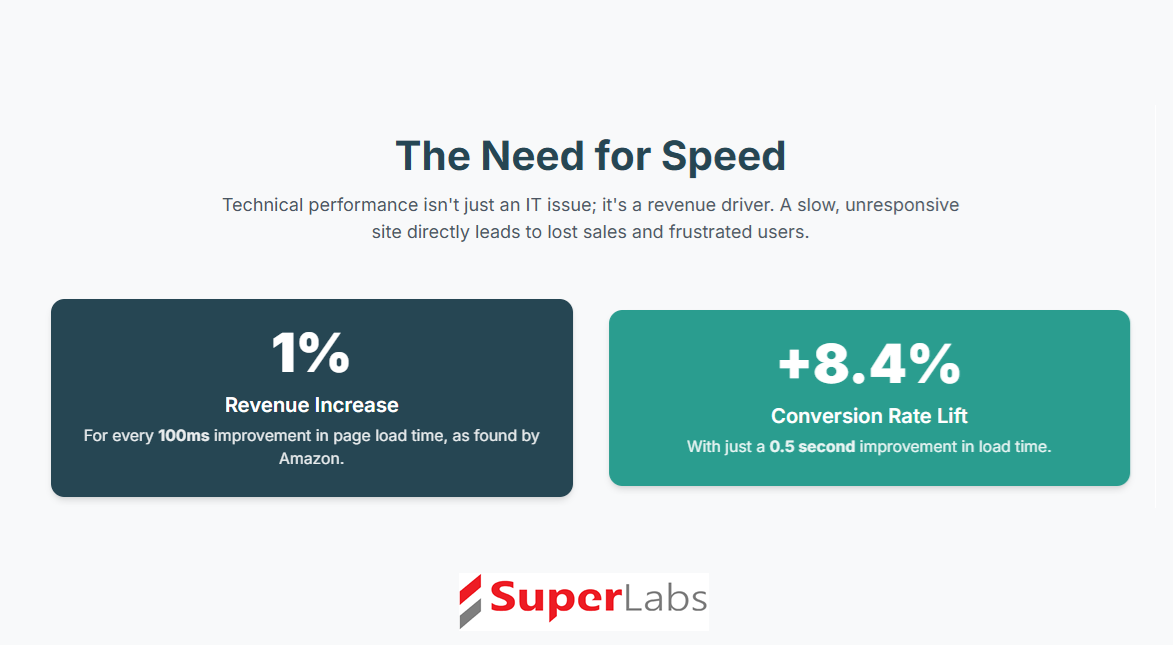Decoding the AI Answer Box: How eCommerce Can Win in the Generative Search Era
Generative AI means consumers now get direct answers, not just links. Strategies for e-commerce sites to become the authoritative source AI pulls from, boosting visibility and traffic.

Generative AI (GenAI) is fundamentally changing how users interact with search engines, moving from lists of links to direct, summarized answers. For eCommerce websites, appearing in these GenAI answers is crucial for visibility and driving traffic. Here are strategies to optimize your content:

1. Understand AI Content Priorities (GEO - Generative Engine Optimization):
- Clarity, Conciseness, and Comprehensiveness: GenAI prioritizes information that is conversational, clear, and comprehensive. Avoid jargon and overly complex sentences.
- Structured and Skimmable Content: AI models prefer well-organized content. Use lists, bullet points, clear headings (H2, H3), and short paragraphs. This makes it easier for AI to extract key information.
- Intent-Focused Content: GenAI focuses on understanding user intent behind a query, not just keywords. Create content that directly answers specific questions your target audience is asking.
- Authority and Trustworthiness (E-E-A-T): GenAI relies on credible sources.
- Expertise: Showcase your product knowledge and industry expertise.
- Experience: Share real-world use cases, customer reviews, and testimonials.
- Authoritativeness: Cite reputable sources when making claims.
- Trustworthiness: Ensure accuracy, provide transparent pricing, shipping, and return policies.
- Include author bios with credentials, expert commentary, and transparent sourcing.
2. Optimize Product Pages and Descriptions:
- Focus on Benefits over Features: While features are important, highlight how the product solves a customer's problem or improves their life. Paint a picture of the positive outcome.
- Detailed and Accurate Information: Provide complete and up-to-date product information, including specifications, materials, dimensions, care instructions, and warranty.
- Natural Language and Conversational Tone: Write product descriptions as if you're speaking directly to a customer. Avoid robotic or overly stiff language.
- Strategic Keyword Integration: Research relevant long-tail and specific keywords your audience uses. Integrate them naturally into titles, descriptions, and meta tags. Avoid keyword stuffing.
- High-Quality Images and Videos: GenAI can analyze multimedia. Ensure your product pages have high-quality, relevant images and videos that provide a dynamic view of the product.
- Personalization: Leverage historical purchase data and user preferences to personalize product content where possible (e.g., personalized emails, recommendations).
3. Leverage Structured Data (Schema Markup):
- Product Schema: Implement Schema.org markup for products (
Product), including details like name, price, availability, reviews, ratings, and images. This helps AI models understand and extract product information more efficiently. - FAQ Schema: For your FAQ pages, use
FAQPageschema to explicitly mark up questions and answers. This makes it easier for AI to generate direct answers to common queries. - Organization Schema: Provide structured data about your organization (
Organization), including your official name, logo, contact information, and social profiles. - Review Schema: Mark up customer reviews (
Review) to highlight social proof and build trust.
4. Create AI-Friendly Content Formats:
- FAQ Pages: Dedicated and well-structured FAQ pages are prime candidates for GenAI answers. Phrase questions naturally and provide concise, specific answers.
- "How-to" Guides and Tutorials: In-depth, step-by-step guides are excellent for GenAI, as they directly address user queries.
- Listicles ("Best Tools for X," "Top 10 Y"): Create high-quality listicles that cater to commercial discovery intent.
- Definitions and Broad Explanations: Provide clear, jargon-free explanations for industry terms or product categories.
- Comparison Pages: Create content that compares your products to competitors or different product variations, helping users make informed decisions.
5. Technical SEO for GenAI:
- Crawlability and Indexability: Ensure your site is easily crawlable by AI bots. Check your
robots.txtfile and meta tags to allow indexing of important pages. - Site Speed and Simplicity: AI crawlers are often immature and may struggle with slow-loading sites or heavy JavaScript. Prioritize fast loading times and clean HTML.
- Clear Site Structure: Use a logical internal linking structure to help AI understand relationships between products and content.
llms.txtFile (Emerging): Keep an eye on developments aroundllms.txtfiles, which may become a standard for explicitly communicating with large language models.- Freshness and Accuracy: Regularly review and update your content to ensure it's accurate and current. AI models prefer fresh and reliable information.
- Sitemaps: Submit up-to-date sitemaps to search engines.
- Favicon and Lead Images: AI search engines may display content visually, so having a clear favicon and lead image improves visibility.
6. Monitor and Adapt:
- Test AI Prompts: Regularly test prompts related to your products and industry in various GenAI tools (ChatGPT, Gemini, Copilot, Perplexity) to see if your content is being referenced.
- Track AI Visibility: Use SEO tools that offer features to track your website's visibility in AI Overviews or other GenAI answer formats.
- Analyze User Behavior: Monitor metrics like time on page, bounce rate, and conversion rates for AI-targeted content to understand its effectiveness.
- Stay Informed: The GenAI landscape is rapidly evolving. Keep up with the latest developments from search engines and AI providers to adapt your strategies.
By implementing these strategies, eCommerce websites can significantly increase their chances of appearing in GenAI answers, driving more qualified traffic and establishing themselves as authoritative sources in the eyes of both users and AI.




